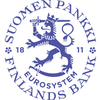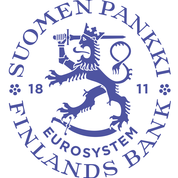ECB monetary policy normalisation is proceeding consistently

Russia’s invasion of Ukraine is weakening the economic outlook and further fuelling the rise in prices. “The impacts of Russia’s brutal war are being felt around the world, and people are having to pay higher prices for energy and food,” says Governor of the Bank of Finland Olli Rehn.
Prices were already rising last year as the COVID-19 pandemic subsided. Energy prices have been a major contributor to inflation, although considerable swings in these have been seen before. Supply chain and logistics problems, combined with a refocus of consumer demand from services to products, has led to shifts in relative prices.
In recent months, inflation has again been higher than anticipated. Major increases in energy and raw material prices are also being transmitted more broadly to the prices of other products and services.“With inflation rising sharply, there has been good reason to expedite the normalisation of monetary policy”, says Governor Olli Rehn. The Governing Council of the European Central Bank will end net purchases under the APP asset purchase programme at the start of July 2022. “Key ECB interest rates will be raised in July and a further rise is expected in September. The aim is to ensure that inflation stabilises at its 2% target over the medium term according to our strategy,” says Rehn.
Household purchasing power was growing for a number of years prior to the pandemic. Wages were rising at a rate that was higher than inflation, but now the situation has changed. Based on wage agreements in the first part of the year, it is anticipated that Finnish companies will retain their competitiveness for the time being. “The next wage rounds will be of major significance in terms of competitiveness. If we have the patience to look beyond the inflation spike, then competitiveness can be retained and the purchasing power of employees can be strengthened in future years,” says Rehn.
In the labour market there is again demand for skilled workers, and many sectors are struggling with labour shortages. With the unemployment rate still exceeding 6%, it is apparent that there are considerable regional and occupational mismatch problems on the Finnish labour market. “It is important to make sure Finland has enough skilled workers and to ensure there are sufficient incentives to work. Finland also needs to attract skilled people from abroad,” says Rehn.
Managing the COVID-19 crisis placed a considerable burden on the public finances. The debt ratio will grow further in the immediate years ahead because fiscal policy is still expansionary. The imbalance in the public finances will not correct itself, however. “In an environment of rising interest rates, the need to stabilize public debt will require focused and targeted fiscal policy measures as well as structural reforms. A comprehensive and regular spending review would support the needs of decision-makers in this,” says Governor Rehn.
Keywords
Images
Links
About Suomen Pankki
The Bank of Finland is the national monetary authority and central bank of Finland. At the same time, it is also a part of the Eurosystem, which is responsible for monetary policy and other central bank tasks in the euro area and administers use of the world’s second largest currency – the euro.
Subscribe to releases from Suomen Pankki
Subscribe to all the latest releases from Suomen Pankki by registering your e-mail address below. You can unsubscribe at any time.
Latest releases from Suomen Pankki
Kutsu medialle: Kiinan talouden ennusteen julkaisu vuosille 2025–20274.11.2025 10:54:07 EET | Kutsu
Miten Kiinan talouskasvu kehittyy lähivuosina? Miten Kiinan kehitys linkittyy muutoksiin maailmantaloudessa? Suomen Pankin nousevien talouksien tutkimuslaitos BOFIT esittelee Kiinan talouden ennusteen vuosille 2025–2027 maanantaina 10.11.2025 klo 13.00–15.30 järjestettävässä BOFIT Kiina-tietoiskussa.
Kutsu medialle: Kansainvälinen valuuttarahasto esittää arvionsa Suomen taloudesta3.11.2025 13:01:16 EET | Kutsu
Kansainvälisen valuuttarahaston (IMF) Suomessa vierailevan valtuuskunnan johtaja Alex Pienkowski esittelee IMF:n laatiman Suomen taloutta koskevan arvion lehdistötilaisuudessa maanantaina 10.11.2025 klo 15.30. Tilaisuus järjestetään etätapahtumana Washington D.C:stä. IMF:n valtuuskunnan englanninkielinen lausunto julkaistaan lehdistötilaisuuden alkamisajankohtana sekä IMF:n että Suomen Pankin verkkopalveluissa. Lausunto edustaa IMF:n asiantuntijoiden arvioita ja näkemyksiä. IMF laatii lausunnosta tiivistelmän, josta Suomen Pankki julkaisee epävirallisen käännöksen suomeksi ja ruotsiksi. Valuuttarahasto arvioi jokaisen jäsenmaansa taloustilannetta säännöllisin välein. Vierailun aikana IMF:n valtuuskunta keskustelee Suomen taloudesta eri viranomaisten, tutkimuslaitosten ja muiden tahojen kanssa. Suomen Pankki vastaa Suomen suhteista Kansainväliseen valuuttarahastoon ja hoitaa IMF:n valtuuskunnan vierailun järjestelyt. IMF:n Suomen vierailun aikana tiedotusvälineiden edustajat kutsutaan v
Eurosystemets penningpolitiska beslut30.10.2025 15:20:48 EET | Beslut
ECB-rådet beslutar om penningpolitiken i euroområdet. ECB-rådet beslutade idag att hålla de tre styrräntorna oförändrade.
EKP:n rahapoliittisia päätöksiä30.10.2025 15:20:48 EET | Päätös
EKP:n neuvosto päättää euroalueen rahapolitiikasta. EKP:n neuvosto päätti tänään pitää EKP:n kolme ohjauskorkoa ennallaan.
Eurosystemet mot nästa fas av projektet för digital euro30.10.2025 12:01:42 EET | Beslut
ECB-rådet har i dag beslutat att gå vidare mot nästa fas i projektet för en digital euro. Detta beslut följer på det framgångsrika slutförandet av förberedelsefasen, inlett av Eurosystemet i november 2023, vilket lade grunden för utgivning av en digital euro.
In our pressroom you can read all our latest releases, find our press contacts, images, documents and other relevant information about us.
Visit our pressroom

